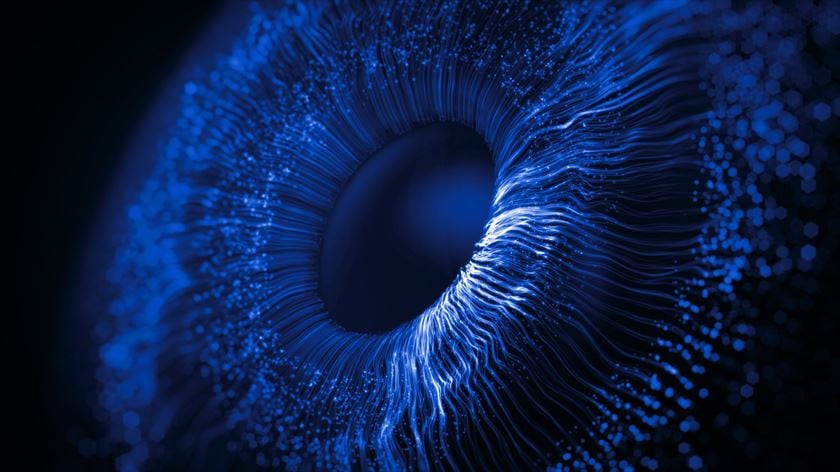Set AR|VR|MR free now
Augmented, virtual or mixed: a new reality is coming. What will it take to gain mainstream adoption?

It’s all about image quality
Right now, we are experiencing a massive growth in interest in the potential of Augmented Reality, Virtual Reality and Mixed Reality (AR|VR|MR) technologies to change the way we present, learn, discover, play and communicate. Factors like increasing internet and 5G transmission speeds, higher mobile processing power, lighter, more energy efficient display technologies, miniaturized optics and waveguides, sophisticated 3D rendering, open source intelligence (OSINT), artificial intelligence (AI) and machine learning (ML) point to a technological convergence where AR/VR/MR technology is poised to become the human:machine interface of the future. In this context, TRIOPTICS considers image quality to be the key success factor.
Every technology entrepreneur in the field of AR|VR|MR must now avoid underwhelming the audience with sub-standard solutions. The worst consequence would be a loss in confidence in your brand, or in the sector as a whole. The world has experienced this with the emergence of previous technologies; if the technology pioneers don’t deliver satisfying and impressive solutions at the outset, investors may abandon the field, and perceive it as not ready for prime time. You will lose their attention, perhaps forever, as they relegate you to the scrapheap of the many interesting but unadoptable technologies that the world has seen.
What we learned from the smartphone
This very phenomenon is well illustrated by the history of the mobile telephone; it stumbled before it took off. The first mobile phones in the 1970s and 1980s were enormously bulky, power-hungry and suffered from poor transmission and reception. As a consequence, the mobile telephony market stalled for at least a decade. It wasn’t until the invention of the NMT and GSM transmission standards that uptake moved from early adopters to the early majority. The scene was set for the success of Nokia and Ericsson in the 1990s. Lower power consumption and better signal quality reduced the size of the handheld device and extended its lifetime, making it very attractive in developed countries with built-out networks.
However, what really shifted the adoption of the mobile phone into the mainstream, with a smartphone in everyone’s pocket, was the birth of the multifunctional offering. In 2007, Apple launched the original iPhone, and in 2008 HTC launched the first Android device. They offered an internet navigator, a music player and a camera in a single device. As we know, whole new industries were born. This technological convergence certainly ignited the growth of social media and streaming services.
The camera in the mobile device rapidly became and has remained a major factor in giving a device a decisive competitive edge, with the capabilities growing with each major smartphone release. The components are both smaller and more exacting as well as capable of even higher performance. The ubiquitousness of tiny, fault-free optical devices in every smartphone is a wonder of modern mass production. Images and films stand the test of being displayed on the most demanding 4K displays. Instagram, TikTok and YouTube probably would not have grown so fast without the smartphone’s outstanding imaging capabilities.
What does this mean for AR|VR|MR?
We can draw two conclusions from the past:
1. AR|VR|MR devices are going to change rapidly, and, if history has anything to teach us, probably at a higher rate of change than that of music playing devices, television and telephony. Design iteration cycles will happen very rapidly.
2. If AR|VR|MR cannot keep pace with prevailing imaging standards, it will be seen as a laggard technology.
There are many considerations for AR|VR|MR devices: manufacturability, portability, robustness, design and display technology, to name a few. TRIOPTICS is convinced that there is one dominating, non-negotiable parameter: image quality. By starting off from the optimization of image quality, a primary objective to win hearts and minds is fulfilled.
Unlike other technology partners, TRIOPTICS’ point of departure is the expertise in testing image quality of not only single components but also complete and complex optical systems. In contrast, other AR|VR|MR development partners often only lean heavily on their expertise in 2D display technology. We argue that the most important consideration is to maximize overall system image quality by simultaneously optimizing on the component as well as the system level to achieve a well-balanced and perfectly tuned image forming pipeline without optical defects like excessive distortion, color artifacts or low contrast images which limit the overall optical fidelity and visual comfort of the device.
AR|VR|MR from lab to fab
TRIOPTICS measurement technology is capable of testing the image quality of any AR|VR|MR device, and, importantly, to transfer measurement practices that are established in the product development phase to quality control routines in the product manufacturing phase. In other words, we can take your AR|VR|MR device design from lab to fab, which is the very same journey that smartphone optics needed to take to reach a mass market.
Give your AR|VR|MR design a competitive advantage by planning image quality as one of your primary design criteria for your AR|VR|MR solution. Not only will you impress investors and build your brand’s reputation – you might even get to market faster.